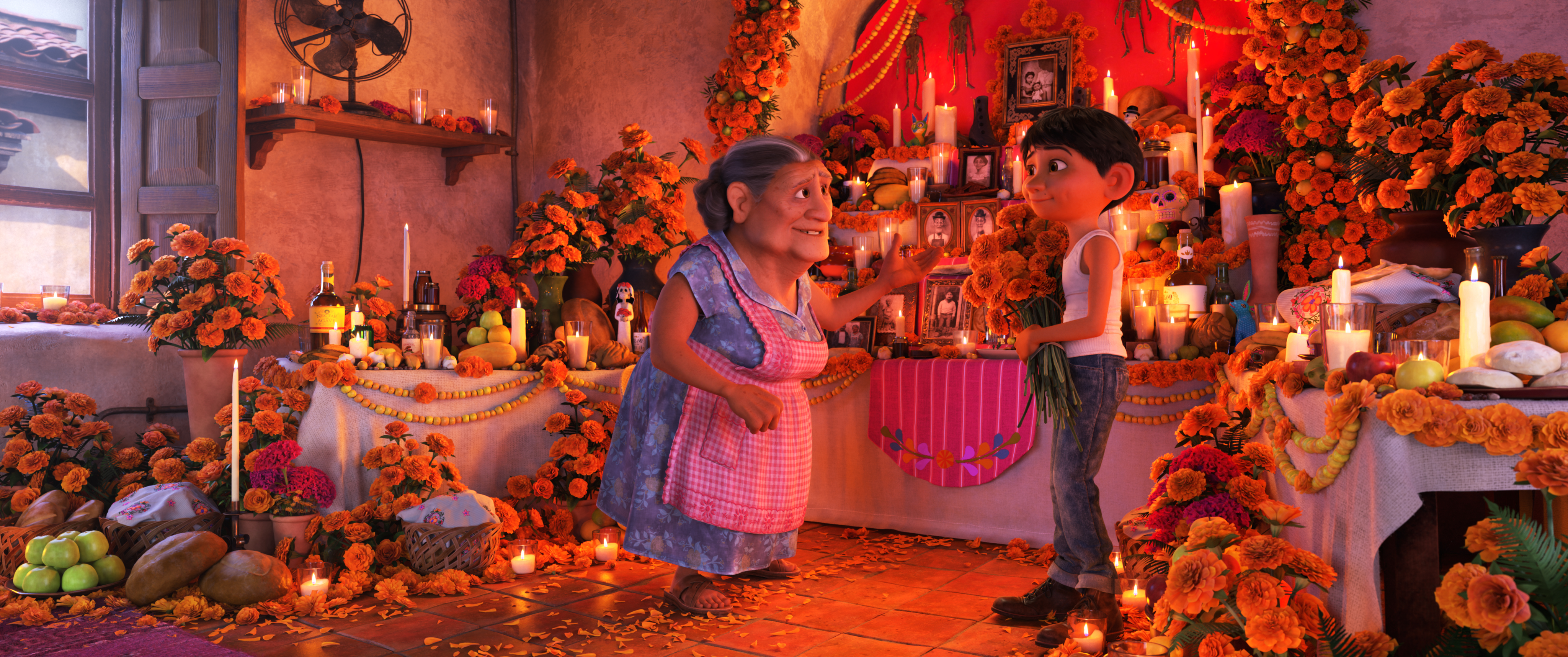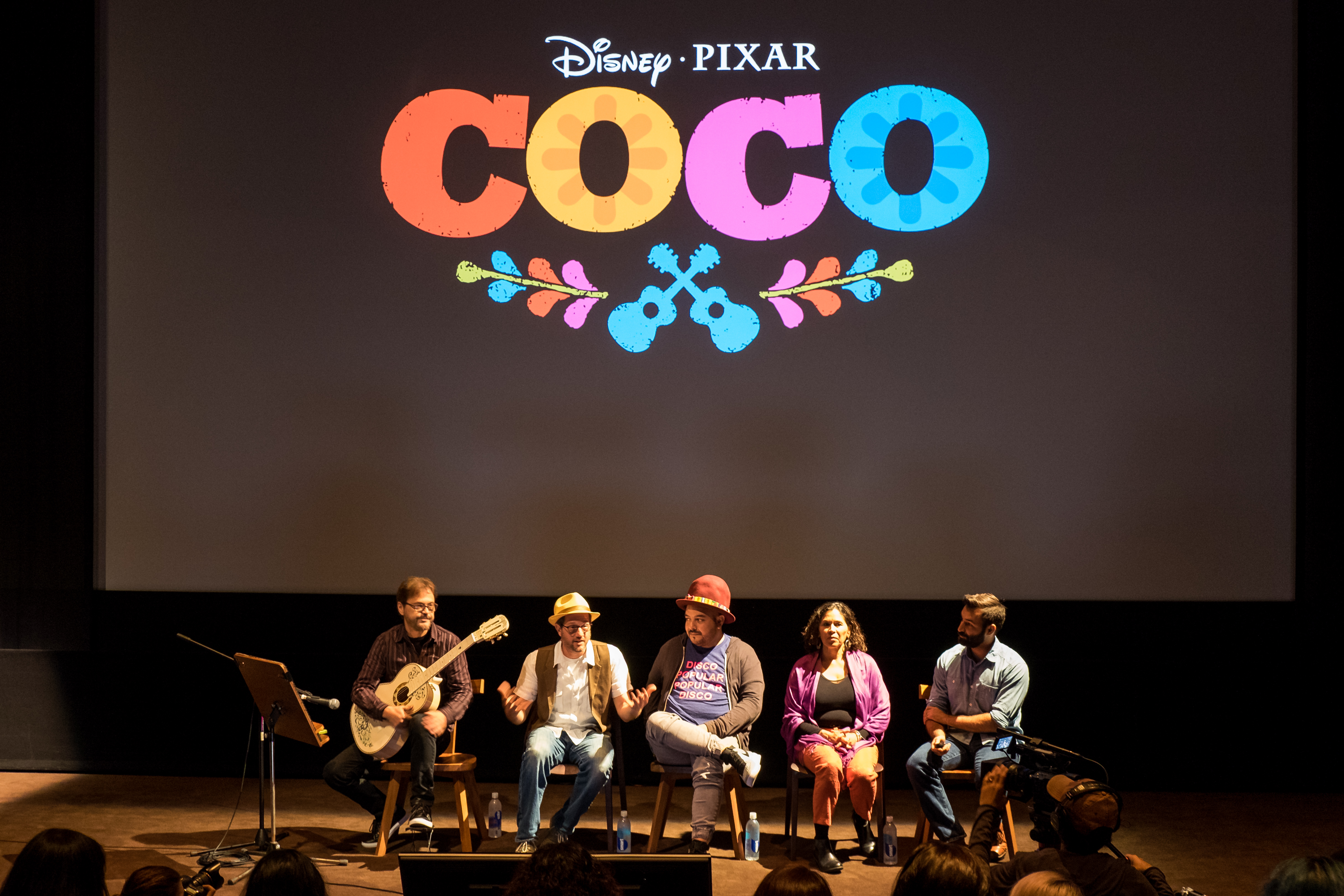Coco is the #1 movie in Mexico of all time. Besides setting unprecedented box office records, it’s also become one of the country’s most beloved films. Following the film’s premiere at the Morelia International Film Festival at the end of October and its general Mexican release on November 2nd, many expressed enormous gratitude to directors Lee Unkrich and Adrian Molina for what they achieved. Coco was always going to be important. It’s Pixar’s first feature length film with a nonwhite protagonist, the first to portray a non-American/nonwhite culture, and is described as a love letter to Mexico. Naturally, Unkrich and his team were responsible for telling this story in the most faithful and positive way possible. He took that responsibility seriously, noting that he didn’t want the film to feel as if it was made by an outsider. Molina and the rest of the crew’s Mexican backgrounds certainly helped a great deal in that regard.
Here’s what Alex Nogales of the National Hispanic Media Coalition had to say about it:
“Coco is the best film ever produced that truly represents our Latino values, our culture, and love of song, dance, and family. You will laugh, you will cry, and applaud loudly on seeing this wonderful film where Latinos play important roles both in front of and back of camera. See it and lets make this great film a success so that studios produce more Latino themed films and television shows.”
Steeped in the rich traditions and customs of Mexico’s Dia de Los Muertos holiday, the heart of Coco beats with tremendous love and life.
12 year old Miguel Rivera (a stellar Anthony Gonzalez in his film debut) is convinced that his family is the only one in Mexico that hates music. And he’s right. It’s inconceivable, but the Riveras believe music is a curse, ever since Miguel’s great-great grandfather walked out on his wife and daughter to pursue a music career. For generations, no Rivera has ever listened to or played music — until Miguel that is. A self taught guitarist, he dreams of being like his legendary idol Ernesto de la Cruz (Benjamin Bratt), Mexico’s most famous and beloved singing star. But of course, he’s kept this passion a secret from his family, especially his grandmother, Abuelita (Renee Victor). As the Rivera family’s loving but formidable matriarch, Abuelita is the primary enforcer of the music ban. Miguel and no one else would dare cross her.
It was Miguel’s great-great grandmother Mama Imelda (Alanna Ubach), furious over her husband’s desertion, who banned music from the Rivera household. To support herself and her daughter, Coco, she made shoes. And she passed this skill down to Coco, who in turn passed it down, until everyone in the Rivera line joined the family business. It’s clear very early on that Miguel is never going to be a shoemaker. He is finally emboldened to seize his moment (de la Cruz’s mantra) and reveal his ambition to his family, who are shocked and upset that he’s disobeyed them. But he is desperate to prove himself a real musician like his idol and perform in a talent show that’s being held on Dia de Los Muertos.
Miguel not only seizes his moment but de la Cruz’s guitar as well, on display in his mausoleum. After joyfully strumming the guitar, Miguel becomes invisible to the living, emitting a rosy orange glow, only visible to his companion, the street dog Dante, and the dead. Because it’s Dia de Los Muertos, spirits have all converged on the cemetery to reunite with their living loved ones. It’s here that he meets his family, the dead Riveras. This is not a fuzzy family reunion however. Though Miguel is awed to be in their presence, they quickly conclude that his sudden appearance to them is the reason Mama Imelda is unable to cross over to the Land of the Living; not a good thing.
Now the adventure begins, as Miguel journeys to the Land of the Dead, and learns the truth of his family history and ancestry.
This world is easily one of Pixar’s most staggering in scope and beauty. The shimmering marigold bridge that connects the two lands, the skull imagery on buildings, Ernesto de la Cruz’s grand palace and the sheer amount of vivid colors practically defy description. Color sings in the Land of the Dead, best represented in the alebrijes, animal spirit guides with bold, deep hues of red, orange, green and other dazzling colors and patterns. The most glorious of the spirit guides is Mama Imelda’s Pepita, a large and powerful winged cat who is sure to take your breath away the moment she appears onscreen.
Coco is brimming with a cast of fully realized characters, alive and not, human and not. Miguel is such a wonderful addition to Pixar’s heroes; passionate, brave, and soft hearted. The skeletons are impressive because they are animated with the same expressiveness as their living counterparts, and actually seem like real people who once lived.
One of the skeletons that Miguel befriends on his journey is the amiable and mischievous Hector (Gael Garcia Bernal), who’s fallen on hard times and is desperate to visit the Land of the Living. The two strike up a bargain: Hector helps Miguel meet de la Cruz, and Miguel helps him cross over. The one factor complicating things is Miguel’s limited time: if he doesn’t receive a family member’s blessing by sunrise at the end of Dia de Los Muertos, he’ll become a skeleton himself and will not be able to return home.
And now, the music! Music is embedded into this story. Although Coco is not a traditional musical, the characters do sing, and memorable tunes penned by the songwriting team of Robert Lopez and Kristen-Anderson Lopez, along with co-director Molina, make this film a compelling ode to music. “Un Poco Loco,” “My Proud Corazon,” and particularly the reworking of de la Cruz’s signature “Remember Me,” sung by Miguel and Natalia Lafourcade during the end credits, are standouts. Michael Giacchino’s ethereal score is yet another to join some of his most distinct Pixar work. The score is also infused with traditional Mexican music and instrumentals. A mariachi band even plays over the Disney castle and logo at the film’s beginning.
Aside from the music and spectacular visuals, Coco‘s most striking element is its theme of cherishing our families both living and dead. Make no mistake that this film speaks (or sings) to all of us with families, all of us who have lost someone dear, and those of us who need to learn more about the people we come from, long gone and maybe even forgotten, or sadly unknown. I am reminded of something Edward James Olmos, the voice of Hector’s friend Chicharron, recently said about the film and its themes:
“People who see this movie are going to come out really moved, especially when you haven’t thought about your parents or you haven’t thought about your loved ones. You haven’t really gotten into your own family, and you been too busy living your life that you haven’t gone back to even say, ‘Thank you.’ You haven’t been even to the cemetery where they’re buried now for 30 years or 20 years or however long they’ve been away from you.”
Olmos is right. I left the theater feeling immensely moved, thinking especially of two recently departed loved ones. I wondered about those who died before I was born or before I could really know them. And I was reminded about how important it is for me to love and appreciate the family I have with me now.
I am profoundly grateful to Coco for its impact on me, and that it has become a source of pride for Mexican people. Imagine the children who will see themselves reflected in Miguel and know that they can be the heroes of their own stories, and feel proud in their brown skin. For Pixar to celebrate Mexican identities is a very beautiful thing, and I hope this means more of the same with other underrepresented communities in the future. Click here to read reviews of the film from Latino perspectives.
Coco is now playing in theaters nationwide. Let it into your hearts and share it with your families this weekend.











